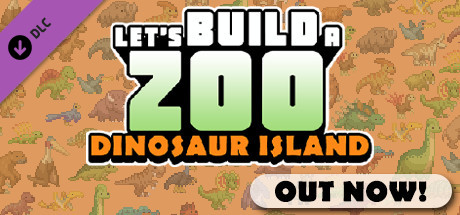Outline:

I. Introduction A. Brief history of dinosaurs B. The concept of a dinosaur zoo C. Purpose of the article
II. Planning Your Dinosaur Zoo A. Location B. Size and space requirements C. Choosing the right dinosaurs D. Staffing requirements E. Safety protocols
III. Designing Your Dinosaur Zoo A. Enclosures B. Landscaping and theming C. Visitor amenities D. Education and conservation
IV. Marketing and Promotion A. Identifying your target audience B. Creating a strong brand identity C. Effective marketing channels D. Special events and promotions
V. Operations and Maintenance A. Daily operations B. Maintenance and repairs C. Animal welfare D. Staff training and development
VI. Challenges and Risks A. Regulatory compliance B. Environmental impact C. Public perception and criticism D. Financial considerations
VII. Conclusion
VIII. FAQs
Let’s Build a Zoo: Dinosaur Island
Dinosaurs have always been a fascinating subject for people of all ages. Imagine walking among the towering, prehistoric creatures, witnessing their behaviors and marveling at their size and strength. Such an experience is now possible with the creation of a dinosaur zoo. In this article, we will discuss how to build your own dinosaur zoo and make it a success.
Planning Your Dinosaur Zoo
The first step in building a dinosaur zoo is choosing the right location. You will need ample space to create enclosures and ensure the safety of both visitors and animals. Consider a location that is easily accessible to the public and has plenty of parking space.
The size of your zoo will depend on the number and size of the dinosaurs you plan to exhibit. The larger the dinosaurs, the more space they will require. It is important to choose a variety of species to appeal to a broad range of visitors. Do your research to ensure that the dinosaurs you choose are appropriate for the climate and environment in which you plan to house them.
Your dinosaur zoo will require a staff with specialized training in caring for and handling these prehistoric creatures. In addition to animal care staff, you will need personnel to manage guest services, maintenance, and security. Be sure to develop a comprehensive safety plan and emergency response protocols in case of any incidents.
Designing Your Dinosaur Zoo
The design of your dinosaur zoo is crucial to creating a compelling and immersive experience for visitors. You should create enclosures that mimic the natural habitats of the dinosaurs you are exhibiting. Consider adding water features, vegetation, and other elements to enhance the authenticity of the exhibits.
Theming is also essential to creating a memorable experience. Consider the era in which your dinosaurs lived and incorporate appropriate elements into your park’s design. You can also include interactive exhibits, educational displays, and other attractions to enhance the visitor experience.
It is important to provide visitors with amenities such as food, restrooms, and gift shops. In addition, your dinosaur zoo should have educational programs to teach visitors about the dinosaurs and their environments. You should also prioritize conservation and environmentally sustainable practices in your operations.
Marketing and Promotion
Effective marketing is essential to the success of your dinosaur zoo. Identify your target audience and create a strong brand identity that appeals to them. Develop a comprehensive marketing plan that includes traditional and digital channels such as social media, email marketing, and paid advertising.
Special events and promotions are an effective way to drive traffic to your park. Consider hosting themed events such as a dinosaur egg hunt or a Jurassic-themed summer camp. You can also offer discounts or package deals to attract visitors.


